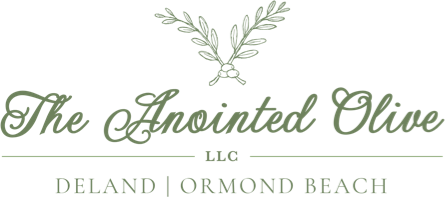YouTube viewers with olive oil anywhere in their search algorithm will likely encounter a 10-minute advertisement for a brand with some lofty claims.
The video begins with a sensational hook: “Olive oil from your local grocery store might actually be more harm than good for your body.”
Gundry, who is not an accredited dietician, came under criticism long before his foray into the olive oil business.
The pitchman is Steven R. Gundry, a Beverly Hills-based cardiac surgeon and author, who claims his olive oil brand contains “more polyphenols than any other olive oil you can find.”
Gundry explains that his oil is sourced from a Moroccan farm where the desert conditions stress the olives, which respond by “producing more hydroxytyrosol than any other olives in the world.”
The advertisement is replete with grand pronouncements that Gundry’s olive oil can “restore your youthful vitality no matter how old you are,” and he repeatedly states that his Polyphenol-Rich Olive Oil has “30 times more polyphenols than any other olive oil.”
The sleight-of-hand that might escape most viewers is that Gundry repeatedly compares his brand to what he calls “traditional” olive oils, not extra virgin olive oils. Refined oils by definition contain a fraction of the phenolic content of extra virgin olive oils.
When asked how their olive oil would compare with extra virgin olive oils, a Gundry associate replied, “Since we have not tested for third-party extra virgin olive oils, we would not be able to provide a comparison to our product. I sincerely apologize for any inconvenience.”
“In my medical practices, I always advise my patients to get at least a liter of olive oil a week,” Gundry says in the video, without specifying whether his 8,000-calorie prescription is to consume extra virgin or refined olive oil.
“In order to slim down, support your heart health, super-charge your energy, soothe your joints, and make your skin glow, a liter of olive oil a week is more than worth it,” Gundry proclaims.
One can imagine some of his devotees smothering their Western-diet fare with more than 1,000 calories per day of olive oil, hoping to “slim down.”
If Gundry counsels his patients to consume a liter of refined oil to reach his recommended intake of polyphenols, he disregards extra virgin olive oils in his directive entirely. (And didn’t he say, “Olive oil from your local grocery store might actually be more harm than good for your body”?)
If he intends for his patients to take a liter of extra virgin olive oil, he fails to acknowledge the legions of researchers who have determined that replacing less healthy fats with a mere two tablespoons per day could bring substantial health benefits.
But as an alternative to downing a liter of some kind of olive oil every week, Gundry wants you to take half a tablespoon per day of his Polyphenol-Rich (and Super-Expensive) Olive Oil, which he says will “ensure you’re getting an entire liter a week’s worth of supercharged polyphenols in just 4 days.”
Olive Oil Times commissioned two analyses of Gundry’s oil that revealed total phenolic content between 561 and 612 mg/kg (or ppm).
While lab test results always have a degree of uncertainty and can vary depending on the analytical methods employed, the phenolic contents of Gundry’s samples, while quite high, would be in line with extra virgin oils produced in regions around the world from early-harvested olives.
However, an internationally-certified taste panel leader found the Gundry sample from the most recent harvest to be lampante — or unfit for human consumption — calling it “one of the worst oils I have ever assessed,” devoid of any positive attributes and exceedingly rancid.
Gundry lists extra virgin olive oil as the sole ingredient on the back of the bottle, but the front indicates “polyphenol-rich olive oil.” It’s therefore unclear, intentionally or not, whether the product is being represented as EVOO or as refined olive oil with additives to boost its phenolic composition.
Gundry’s website offers another product, “Chef’s Select,” from the same Moroccan source, which indicates extra virgin olive oil on the front label yet sells for 1/4 the Polyphenol-Rich oil price. When asked to explain the difference, a Gundry associate replied, “there is no hydroxytyrosol in the Chefs Select” — a surprising statement since any extra virgin olive oil has at least some of the compound.
Again, when Gundry explains that it would take a liter of “regular olive oil” every week to reach his recommended intake of phenols, he seems to be referring to refined oils. To suggest his olive oil boasts 30 times more polyphenols than any extra virgin olive oil would be patently false.
Yet that’s the reasoning behind the nearly $200-per-liter price tag of Gundry’s product when Moroccan extra virgin olive oil is trading for around $3.65 on a good day.
Gundry’s label also shows a three-year shelf-life, a rare and unscrupulous (though technically legal) practice that helps a producer sell oil well past its prime.
Joseph R. Profaci, executive director of the North American Olive Oil Association, said members of the group, including major American importers, are prohibited from indicating a three-year shelf-life on packaging “following clear guidance from the International Olive Council.”
And justifying a sky-high price for elevated phenolics levels (even if it were true) has its own problems.
Gundry claims “you can never get too many polyphenols” without citing evidence, contrary to some health experts who say that’s not the case.
“You get to a point, and sometimes early, that the high doses [of polyphenols] become hazardous,” Jim Kehrer of the pharmacy department at the University of Alberta in Edmonton said in an interview with CBC News.
“Advertisers have put forth the idea that a little is good, more is better, and a lot is great, but that isn’t really correct,” said Kehrer, who has been researching the effects of free radicals since the 1970s, according to CBC.
Gary Beauchamp, the president emeritus of the Monell Chemical Senses Center in Philadelphia who discovered and named the phenolic compound oleocanthal, said there is no evidence that more is always better when it comes to phenols, adding “it is reasonable to assume that there is a level of phenolics that would not be healthy to consume.”
Gundry, who is not an accredited dietician, came under criticism long before his foray into the olive oil business.
Robert H. Eckel, a past president of the American Heart Association, wrote in an article for the Center for Nutritional Studies that Gundry’s diet advice contradicts “every dietary recommendation represented by the American Cancer Society, American Heart Association, American Diabetes Association and so on” and that it is not possible to draw conclusions from Gundry’s research due to the absence of control patients in his studies.
“There is no detailed publication of his methods, his subjects, his results, or his intervention,” Eckel wrote, attributing Gundry’s unsubstantiated claims to “either willful negligence or astonishing incompetence.”
“I find it curious that MDs think they can function as a nutritionist,” said Mary Flynn, a nutritionist for Brown Medical School. “As an MD, his nutrition knowledge would be limited, so I guess he is just one more MD making money off the internet.”
In New Scientist, food writer and chef Anthony Warner called Gundry’s theories on nutrition “laughable” and unsupported by mainstream nutritional science.
Beauchamp, who first identified one of the most celebrated phenolics in extra virgin olive oil, said Gundry’s work seemed “very problematic” when asked about the advertised claims.
Hard-working producers of high-quality extra virgin olive oils worldwide have always struggled to differentiate their brands in a crowded marketplace rife with lesser products.
Undermining their efforts is the long-standing practice by mass merchants who use extra virgin olive oil as a loss-leader, suppressing prices and livelihoods.
Celebrity doctors and chefs routinely stumble through on-air mistruths, like a widely cited (and thoroughly debunked) refrigerator test to determine olive oil quality or a ludicrous see-through test for purity.
And there will always be snake oil salesman throwbacks who capitalize in the vacuum of consumer knowledge about a healthy, affordable and necessary commodity.
“We need to stop the spread of the false choice that olive oil is healthy only if it’s expensive,” Profaci wrote. “Such misinformation pushes consumers who can’t afford to pay $1 or $2 per tablespoon or even more to forgo the potential health benefits of olive oil entirely and opt instead for less healthy cooking oils. And it is especially objectionable when such misinformation comes from a physician who has sworn to do no harm.”
There are others following Gundry’s lead. A Los Angeles-based osteopath is selling Greek olive oil for $272 per liter, claiming it contains “plant-based superphenols,” whatever that means. (A trademark application for the meaningless term is pending.)
Gundry nevertheless enjoys a considerable following who gush with glowing testimonies of their changed lives on his YouTube channel and product pages.
If only the opportunistic doctor used his megaphone to spread truths, instead of adding to the abundant confusion about this vital product and subverting ethical producers and marketers’ efforts to educate the deserving public.
Curtis Cord is the founder and editor-in-chief of Olive Oil Times.

 Curtis Cord
Curtis Cord

